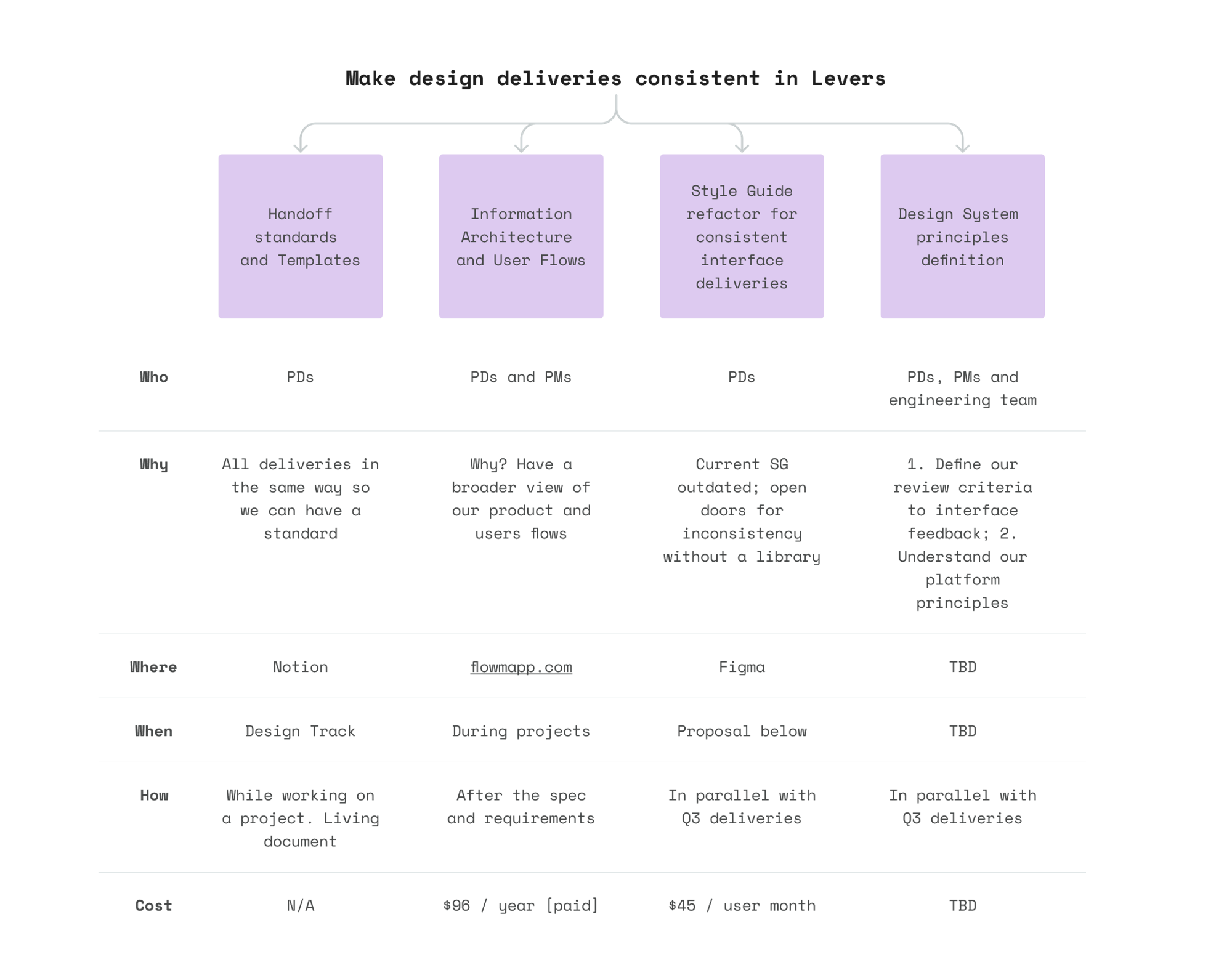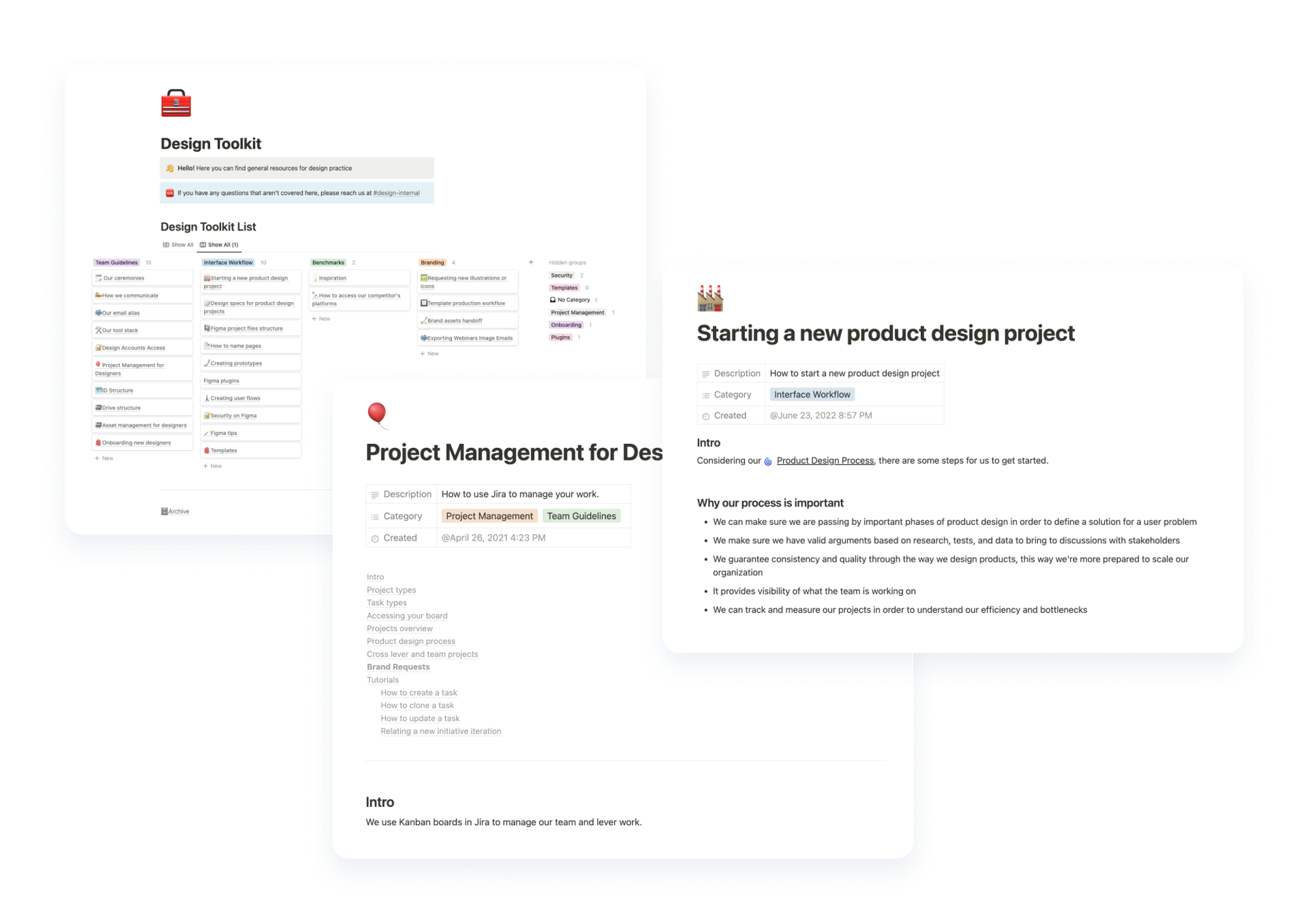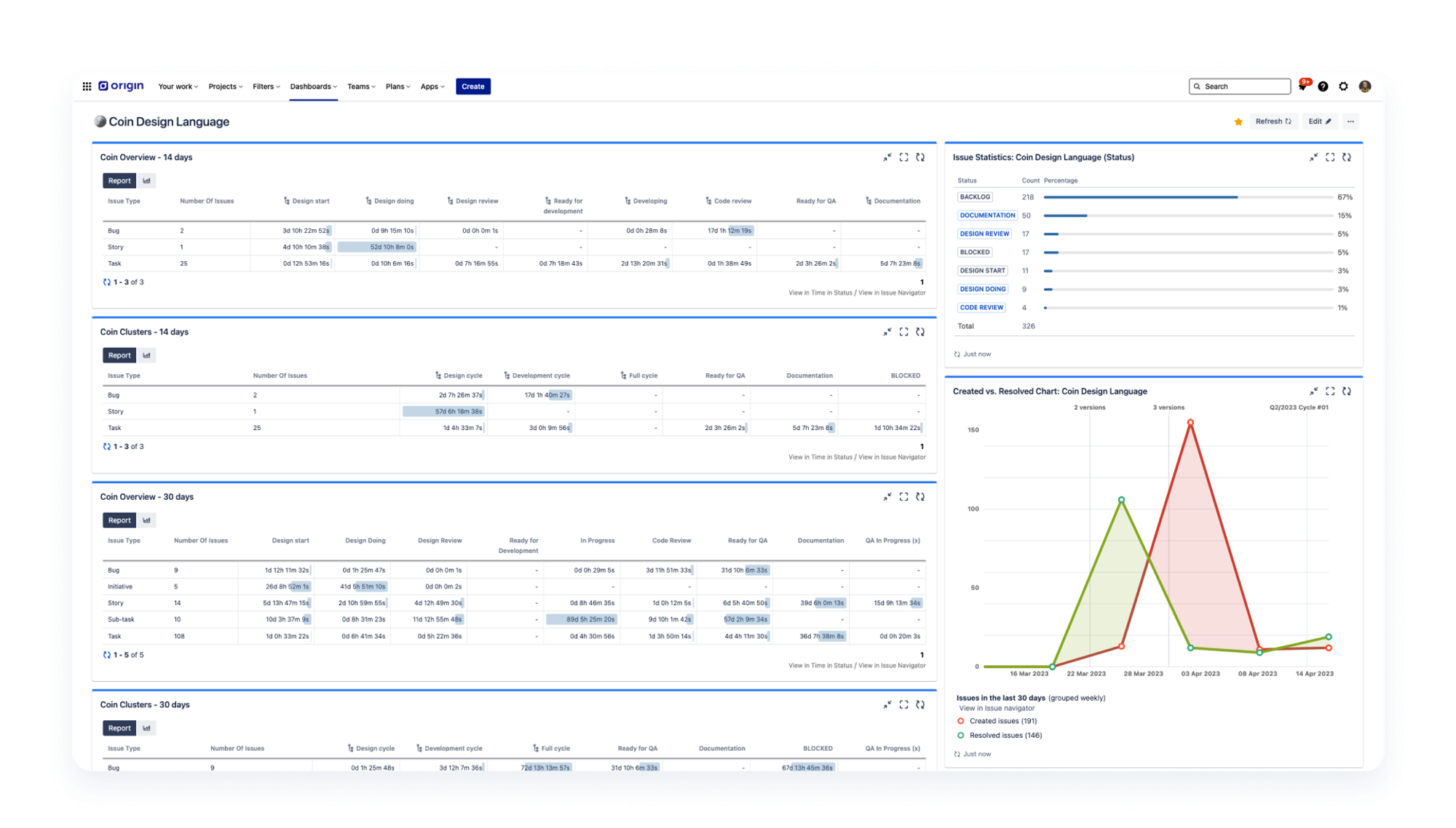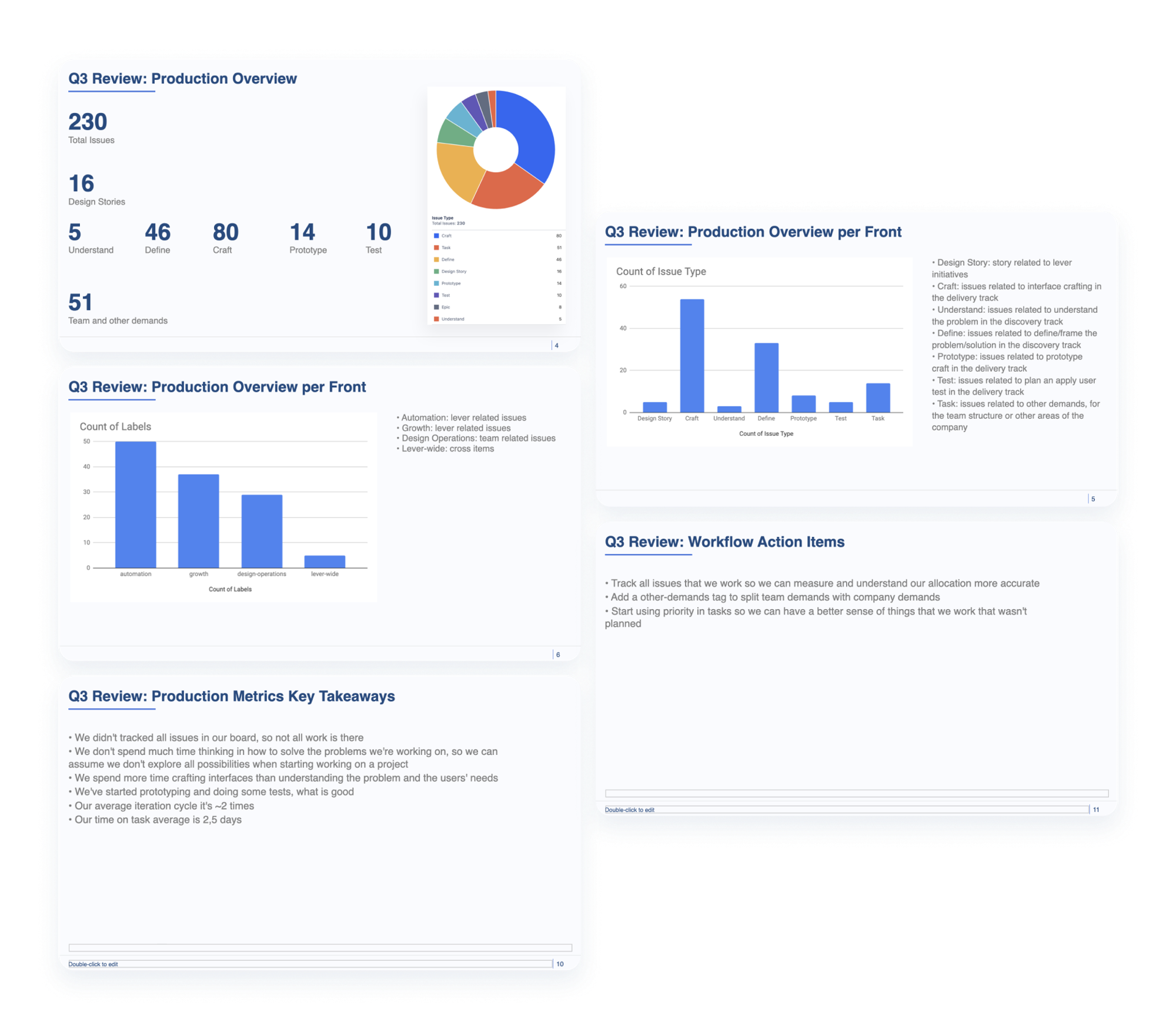Overview
In this design case, I will detail a project where I joined a company as the second designer and took the initiative to define and implement a design process. By creating guidelines, and templates, and establishing process metrics, I facilitated the growth of the design practice. I identified the need to expand the team with a brand designer and a researcher to support the increasing workload and project complexity.
Users and stakeholders
- Design team
- Product team
Roles and responsibilities
Design Operations Manager: leading the effort of providing work visibility and identify improvement opportunities.
Problem statement
Upon my arrival, it became evident that the company needed a standardized design process, resulting in inefficiencies, inconsistencies, and a lack of focus on user-centered design. As the design team grew, it was crucial to establish a structured workflow to ensure high-quality design outcomes.
Scope and constraints
As the second designer, there was a lot to do, and to balance the time of getting context, delivering, and structure things was the biggest challenge.
Getting things done
Defining the process
I collaborated with stakeholders, including the existing designer, product managers, and developers, to understand the current ways of working and pain points, so I can elaborate on how to bring the design thinking mindset and process to increase the confidence of the design collaboration along the product development process, to improve the design mindset, and also better align the design efforts with business goals and user needs.

As it was lacking visibility of tasks and initiatives on the design side, I set a Jira board where we had a design story and sub-tasks for each stage in the design process, so we could plan each project what it was going to be made, and start having visibility and understanding about our ways of working



Guidelines and templates
I created usage guidelines for the design process, aside from defining a template for what we called a design story, the documentation artifact where we would add the relevant project information from the beginning, to keep track of the initial scope, artifacts made, and further decisions.

Measuring the process
To measure the design process is tricky and there is no right answer for that. Once we started learning together, we defined a set of basic metrics regarding project management to gain an understanding of our process and start conversations about how we could evolve.
It was set a dashboard to track these indicators, aside from quarterly reports to elaborate on learnings and opportunity areas.

Identifying hiring needs
As the company's design needs grew, I recognized the need to expand the design team. Based on the increasing demand for brand materials identified in one of our quarterly reports, I advocated for hiring a dedicated brand designer.
Additionally, with multiple projects underway, I identified an opportunity to enhance our research practice and proposed the hiring of a dedicated researcher, once we were lacking user-centered decisions in some projects due to team capacity.

Outcomes and Results
Goals achieved
- The transition from ad hoc practices to a structured and collaborative workflow.
- Contribution to the company's design maturity and team evolution.
- Created usage guidelines and templates for design documentation.
- Implemented a Jira board for task visibility in the design process.
- Defined basic metrics for measuring the design process.
- Set up a dashboard to track process indicators and generated quarterly reports.
- Advocated for the hiring of a brand designer to meet growing demands.
- Proposed the hiring of a dedicated researcher to enhance the research practice.
Lessons learned
- Importance of understanding where we're investing and allocating our time on
- Understand our process and what could be improved to deliver more value to users
- The importance of collaboration with stakeholders to understand pain points.
- The need for clear guidelines and templates for consistent documentation.
- The challenge of measuring the design process and the value of basic metrics.
- The role of quarterly reports in identifying opportunities for improvement.
- The value of advocating for specialized roles to support design growth.
- The importance of aligning design efforts with business goals and user needs.